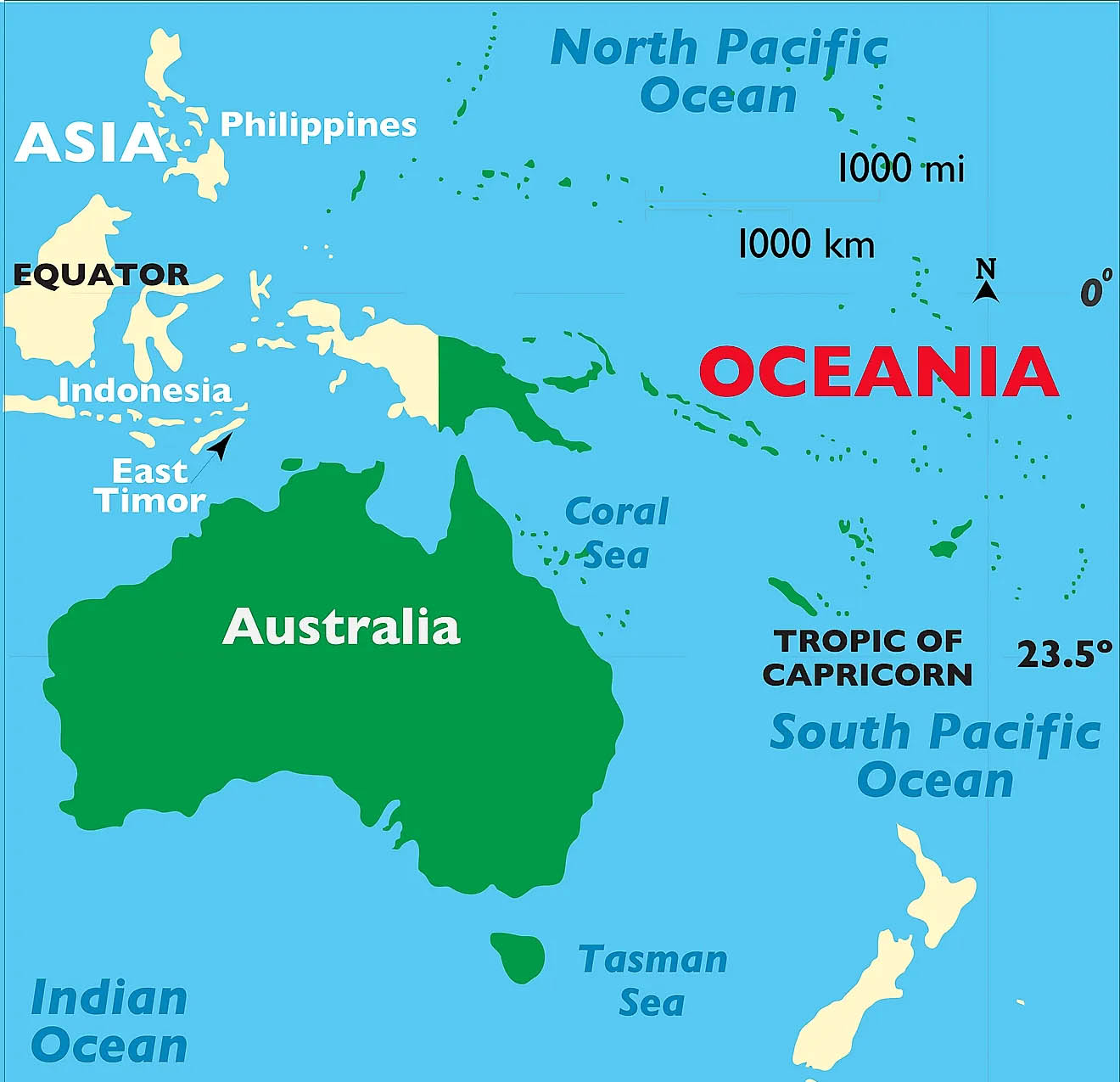International Relations
India-Australia Interim Trade Agreement
- 15 Feb 2022
- 7 min read
For Prelims: Location of Australia and the Neighbourhood, Early Harvest Agreements, Free Trade Agreements, Supply Chain Resilience Initiative, World Trade Organisation, CECA, CEPA.
For Mains: International Treaties & Agreements, Government Policies & Interventions, Groupings & Agreements Involving India and/or Affecting India's Interests, India-Australia Relation, Significance of Trade Agreements.
Why in News
Recently, India and Australia have announced that they are set to conclude an Interim Trade Agreement in March 2022 and a Comprehensive Economic Cooperation Agreement (CECA) 12-18 months thereafter.
- The agreement will cover “most areas of interest for both countries” including goods, services, rules of origin, sanitary and phytosanitary measures and customs procedures.
- Earlier, India, Japan and Australia have formally launched the Supply Chain Resilience Initiative (SCRI).
What is an Interim Trade Agreement?
- An interim or early harvest trade agreement is used to liberalise tariffs on the trade of certain goods between two countries or trading blocs before a comprehensive FTA (Free Trade Agreement) is concluded.
- Government’s emphasis on interim agreements may be tactical so that a deal may be achieved with minimum commitments and would allow for contentious issues to be resolved later.
- The problem, though, is that these early harvest schemes potentially target the low-hanging fruits, leaving the tougher goods and services for later.
- This strategy can lead to significant delays in wrapping up the mode broad-based FTAs, which could potentially lead to impediments.
- India had concluded an early harvest agreement with Thailand in 2004 but has not been able to conclude a comprehensive FTA with the country.
- India also has a trade agreement with Sri Lanka dealing with goods but was not able to conclude an agreement on services and investments.
- Early harvest agreements that do not graduate into full-scale FTAs are exposed to legal challenges from other countries that are members of the World Trade Organisation (WTO).
- It is often beneficial to negotiate the entire deal together, as an early harvest deal may reduce the incentive for one side to work towards a full FTA.
What are Free Trade Agreements?
- It is a pact between two or more nations to reduce barriers to imports and exports among them.
- Under a free trade policy, goods and services can be bought and sold across international borders with little or no government tariffs, quotas, subsidies, or prohibitions to inhibit their exchange.
- The concept of free trade is the opposite of trade protectionism or economic isolationism.
- FTAs can be categorised as Preferential Trade Agreement, CECA , Comprehensive Economic Partnership Agreement (CEPA).
What is India’s Current Trade Relation with Australia?
- Bilateral trade between the two countries stood at about USD 12.5 billion in Financial Year (FY) 21 and has already surpassed USD 17.7 billion in the first 10 months of FY22.
- India has imported merchandise worth about USD 12.1 billion from Australia in the first 10 months of the fiscal and has exported merchandise worth USD 5.6 billion in the same period.
- Key imports from Australia include coal, gold and Liquified Natural Gas while key exports to the country from India include diesel, petrol and gems and jewellery.
What Opportunities does the Agreement Brings?
- The agreement with Australia is set to bring opportunities across sectors including mining, pharmaceuticals, health, education, renewables, railways, gems and jewellery, tourism, defence and textiles.
- India is also likely to seek easier visa access for both students and professionals visiting Australia.
- Australia is likely to seek market access for wines and agricultural products which are not produced on a large scale in India.
- Both countries are also looking at mutual recognition of educational qualifications to boost the number of Indian students seeking education in Australia and vice versa and boost tourism in both countries.
- India and Australia have also signed an MoU to boost tourism between the two countries.
- The agreement would lead to deeper cooperation between the two countries in critical minerals and rare earth elements which are critical to future industries including renewable energy and electric vehicles.
- As Australia has plentiful supplies of rare earths and critical minerals in but it needs places for them to be processed.
What is QUAD's Impact on Trade Relations between India and Australia?
- India and Australia are both members of the QUAD (Quadrilateral Security Dialogue) along with the US and Japan.
- Recently, the fourth meeting of the foreign ministers of the QUAD grouping (India, the US, Australia and Japan) was held in Melbourne, Australia.
- Both countries have noted that the coalition has given impetus to increasing trade relations between all members of the QUAD.
- Australia noted that it already had FTAs with both the US and Japan and that all four countries could start building a framework for economic cooperation within the countries of the QUAD after they announced a deal with India.
What Other Free Trade Agreements is India Currently Negotiating?
- India is currently in the process of negotiating FTAs with the UAE, the UK, Canada, the European Union and Israel, besides Australia.
- India is also looking to complete an early harvest agreement with the UAE and the UK in the first half of 2022.





